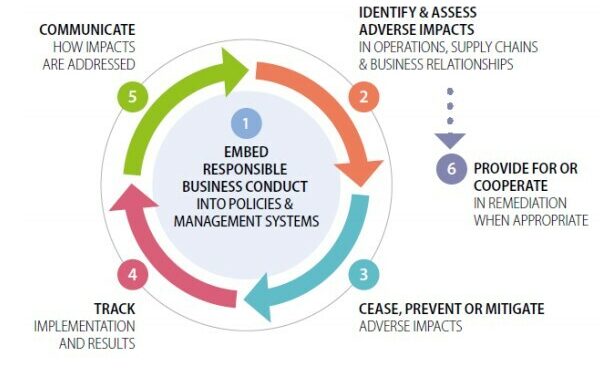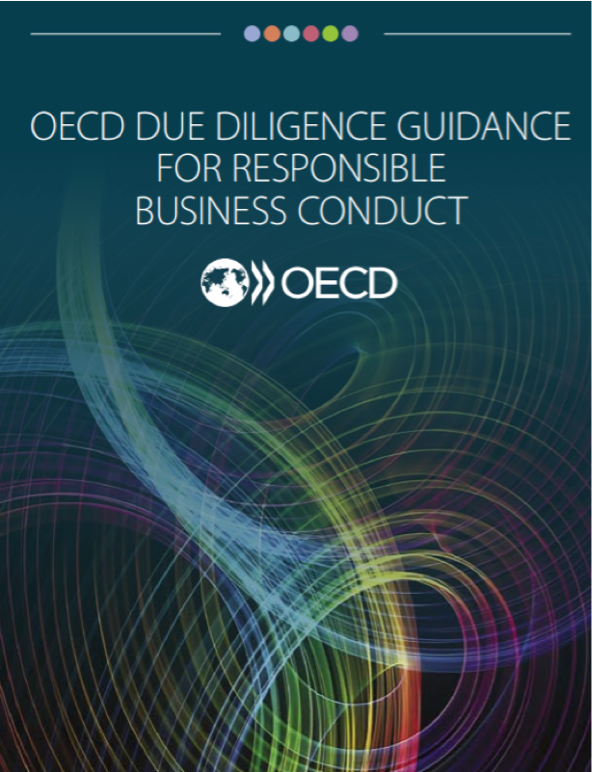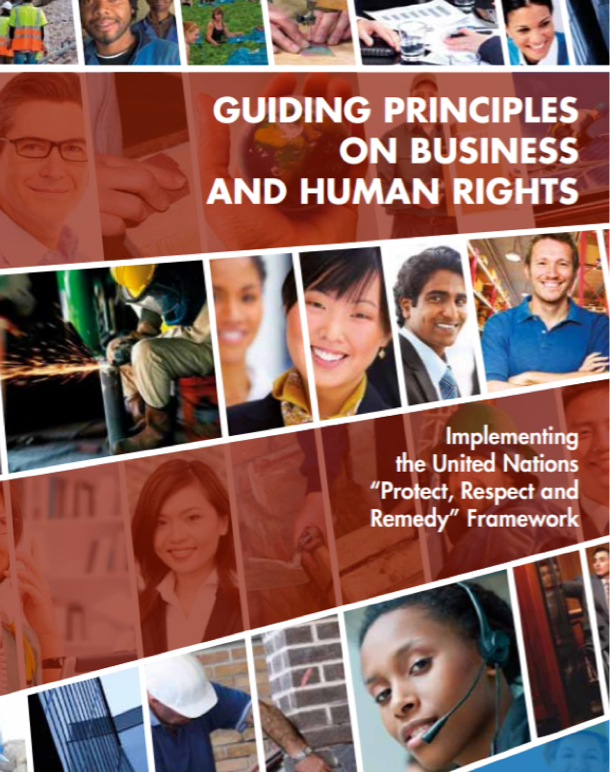.
HRDD is essential for responsible business conduct in international supply chains and forms a central part of the Organisation for Economic Co-operation and Development (OECD) Guidelines for Multinational Enterprises and the United Nations Guiding Principles on Business and Human Rights.
The OECD has developed the OECD Due Diligence Guidance for Responsible Business Conduct: a comprehensive guidance to support companies through the HRDD process. This Guidance acts as the basis for responsible sourcing standards and has been adopted by multiple governments, including The Netherlands . The OECD Guidance outlines six steps that make up the HRDD process:

In addition to the six steps, the OECD Guidance provides further clarification for important aspects of the due diligence process, including meaningful stakeholder engagement, policy development, and prioritisation of adverse impacts. While the Guidance does give companies pointers to support the integration of gender in the Annex, this is not a central focus. For information on what gender-responsive due diligence is and how it differs from HRDD, visit the next page.



